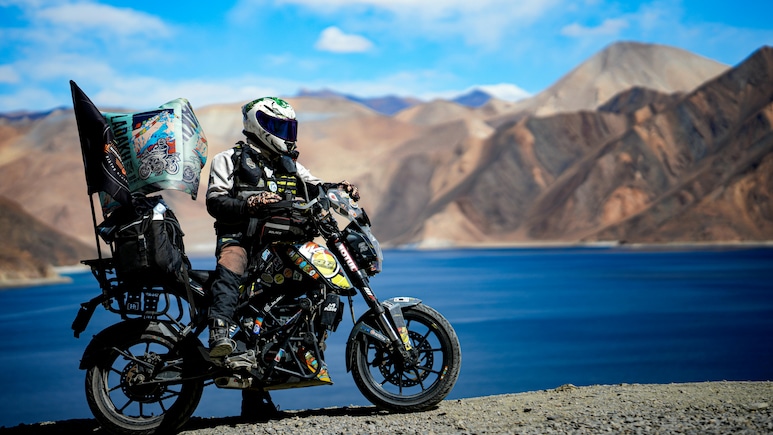
Ask any biker in India what their ultimate dream ride is, and chances are they will say: Leh Ladakh. It is not just any destination; riding to Leh Ladakh is a badge of honour, a high-altitude pilgrimage that tests your grit, gear, and guts. From the moment you hit the Manali-Leh highway or the Srinagar route, you know you are in for something extraordinary. Snow-dusted passes, lunar landscapes, prayer flags fluttering in the wind make it the kind of ride that stays with you long after the engine cools. But let's be honest. Ladakh is no place for winging it. The terrain is rugged, the weather unpredictable, and the altitude unforgiving. One moment you are cruising under cobalt skies, the next you are dodging hail or fixing a puncture in the middle of nowhere.
That is exactly why packing smart is not just helpful, it is essential. Whether you are riding solo or with your crew, the right preparation will help you carry everything you need to stay safe, comfortable, and adventure-ready. And guess what - we have got you covered. Here's the ultimate packing guide for a biking trip to Leh Ladakh.
Also Read: Top 8 Road Trips In India To Take Before You Turn 30
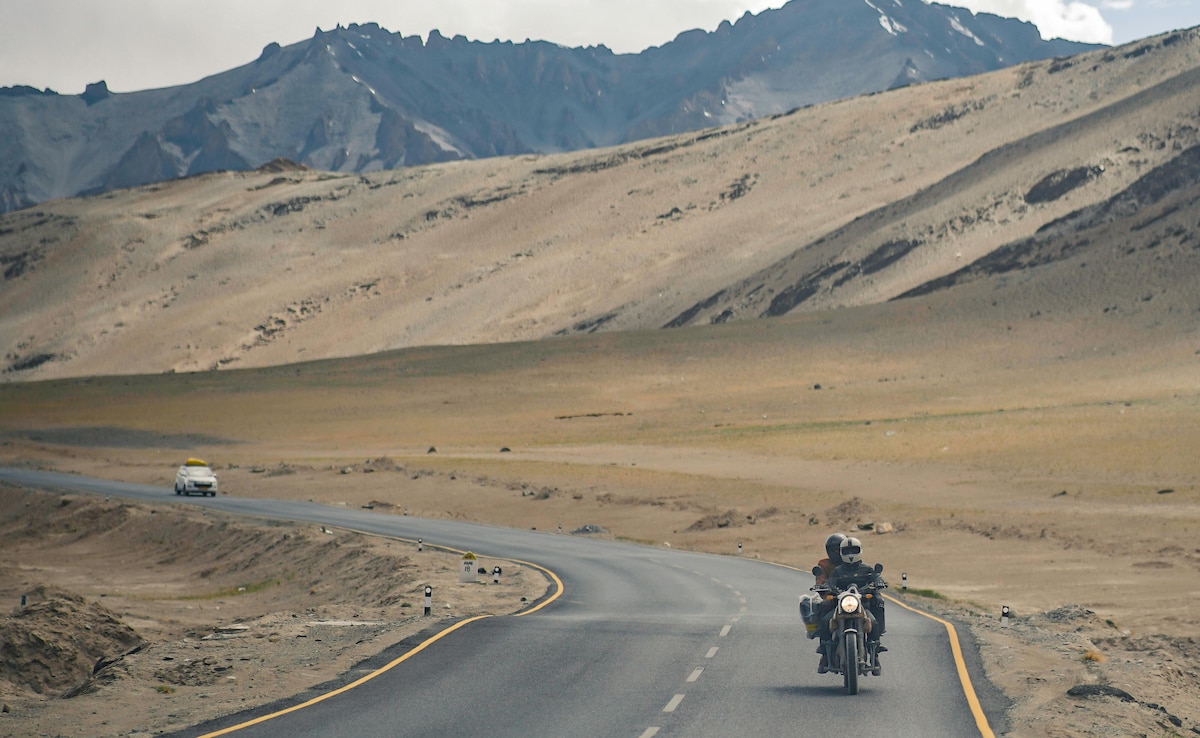
Photo Credit: Pexels
Leh Ladakh Bike Trip Packing List: 9 Essentials Every Rider Must Carry
1. Documents: Your Paper Passport To Ladakh
Before you even think of revving up your engine, make sure your paperwork is sorted. Ladakh is a sensitive border zone, and checkpoints are frequent. Missing a permit or ID can mean delays, detours, or denied entry.
You will need:
- A government-issued ID (Aadhaar, Passport, or Voter ID)
- A valid driving licence
- Bike registration certificate (RC), insurance papers, and PUC
- Inner Line Permit (ILP) for restricted areas like Nubra Valley, Pangong Lake, and Tso Moriri
- Multiple photocopies of all documents
- Passport-size photographs
- A printed itinerary and emergency contact list
Pro Tip: Store everything in a waterproof pouch and keep digital backups on your phone. You never know when you will need to show papers in a downpour or at a remote army post.
3. Clothing: Layer Like A Local
Ladakh's weather is famously unpredictable. You might start your day in sunshine and end it in snowfall. The secret to staying comfortable is layering. Carry lightweight, breathable clothes that you can add or remove as needed.
Step-By-Step Guide To Layering Clothes While Biking:
- Start with thermal inners to trap body heat.
- Over that, wear quick-dry T-shirts and full-sleeve shirts to protect against sunburn and dust.
- Next, a fleece jacket adds warmth, while a windproof outer shell shields you from icy gusts.
- Waterproof jackets or ponchos are lifesavers during sudden rain or hail.
Bonus:
- Do not forget woollen gloves, a cap, and a buff or balaclava to cover your face.
- Sunglasses with UV protection are essential not just for style, but to prevent snow blindness.
- For footwear, sturdy trekking shoes or riding boots are best.
- Carry flip-flops for evenings at the guesthouse.
Also Read: From Wayanad To Kabini, This Is South India's Most Romantic Road Trip Right Now
3. Riding Gear: Safety Is Non-Negotiable
This is not the time to compromise on gear. Good riding equipment protects you from accidents, fatigue, and the elements.
- Helmet: Go for a certified full-face helmet, which is DOT or ISI approved.
- Riding jacket: It should have built-in guards for elbows and shoulders. Pair it with waterproof gloves and knee/elbow protectors.
- Riding pants: Pick the ones with thermal liners. But if you are wearing jeans, layer them with thermals underneath.
- Footwear: Ankle-high boots offer grip and protection on slippery terrain.
Pro Tip: Add reflective strips or a vest to stay visible during foggy mornings or late-night rides. Also, if you are renting gear, inspect it thoroughly for safety.
Also Read: Why Road Trips Exhaust You More Than Train Rides
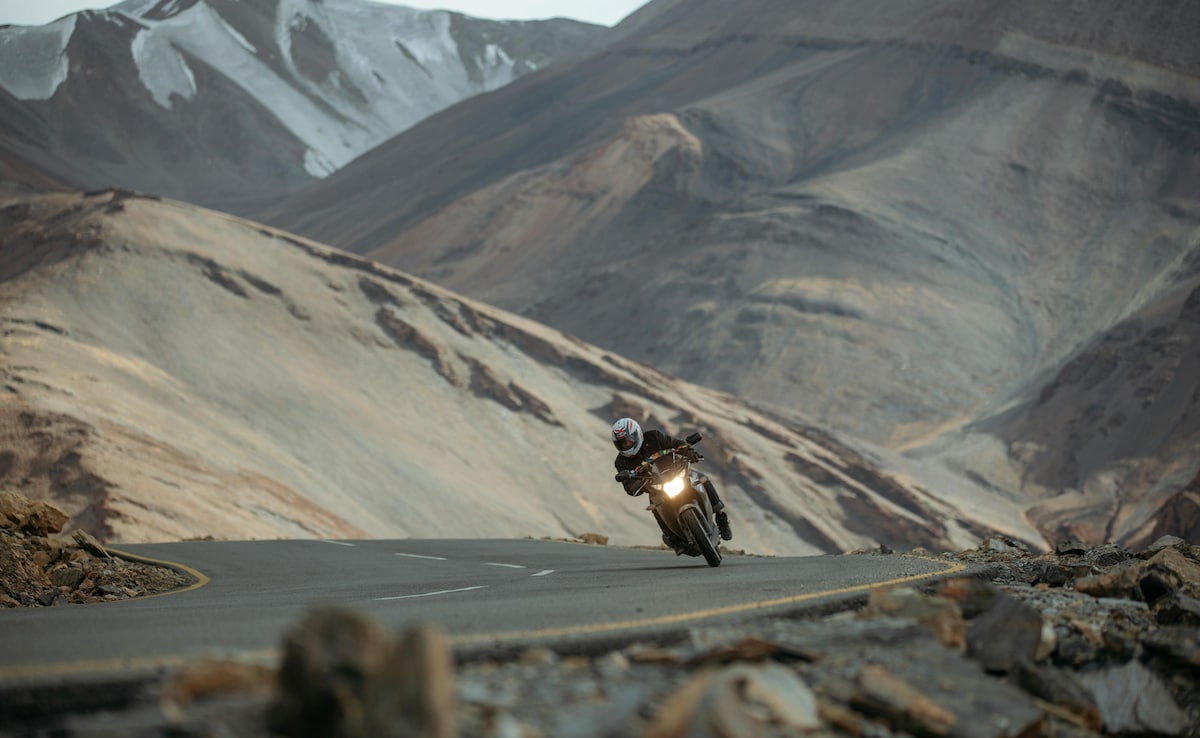
Photo Credit: Pexels
4. Bike Repair Kit: Be Your Own Mechanic
Mechanics are rare in Ladakh. A minor breakdown can turn into a major delay if you are not prepared. So, carry a basic motorcycle tool kit, including:
- Spare bike key
- Spare clutch, brake, and accelerator cables
- Spark plugs and fuses
- Chain lubricant and links
- Puncture repair kit and portable air pump
- Headlamp bulb and petrol pipe
- Extra fuel can (5 litres minimum)
- Bungee cords and nylon rope
Expert Insight: Get your bike serviced before the trip and learn basic repairs like fixing a puncture or replacing cables.
5. Toiletries: Stay Fresh In The Wild
You may not find a fancy bathroom, but you can still stay fresh and hygienic. Pack a compact toiletry-kit:
- Toothbrush, toothpaste, soap, face wash
- Sunscreen SPF 50+ and lip balm
- Wet wipes, tissues, and toilet paper
- Quick-dry towel and deodorant
- Mustard oil for dry skin and nostrils
- Hand sanitiser and paper soap
Pro Tip: Keep everything in ziplock bags to avoid leaks and spills.
6. Medical Kit: Your Mobile Pharmacy
Altitude sickness is real. So are minor injuries, stomach bugs, and dehydration. A well-stocked medical kit is your best friend on this trip. So, consult your doctor before the trip and customise your kit to your health needs. A basic medical kit may include:
- Diamox for mountain/altitude sickness (only if prescribed by your doctor)
- Paracetamol, painkillers, and antihistamines
- Antiseptic cream, band-aids, and gauze
- ORS sachets and glucose powder
- Nasal drops and cough syrup
- Thermometer and cotton
- Personal medications with prescriptions
Also Read: 5 Epic Road Trips Across The Himalayas For The Adventure Of A Lifetime
7. Food And Hydration: Fuel For The Rider
You will not always find a dhaba when hunger strikes. Carry snacks that are light, nutritious, and easy to pack.
- Dry fruits, energy bars, dates, and trail mix are great for quick boosts.
- Instant noodles, soup packets, and ready-to-eat meals in pouches are handy for remote stays.
- Peanut butter and jam make for easy sandwiches.
- Teabags, coffee sachets, and glucose powder help you stay energised.
- Water purification tablets or a portable filter are useful when clean water is not available.
- Carry a reusable water bottle or hydration bag and sip frequently to avoid dehydration.
8. Electronics And Navigation: Stay Connected, Stay Found
Connectivity is patchy, so plan for offline survival with a handy map and proper interaction with the locals. Also carry:
- Mobile phone and charger
- Power bank (10,000 mAh or more)
- Spare batteries and memory cards
- Torch or headlamp
- Offline maps app or GPS device
- Printed map of Ladakh
- Action camera or DSLR (optional)
9. Bags And Packing Strategy: Travel Light, Pack Right
Smart packing is the difference between a smooth ride and a chaotic one. Keep accessibility in mind and carry essentials like snacks, documents, and medical kits within easy reach.
- A 50-60 litre rucksack with a rain cover.
- Saddle bags or tank bags help distribute weight evenly.
- Waterproof packing cubes or ziplock bags to organise clothes, toiletries, and electronics.
- Carry a daypack for local exploration and plastic bags for wet clothes and waste.
- Bag locks and safety pins are useful for securing your gear.
Expert Insight: Distribute weight evenly and keep essentials accessible.
Also Read: Road Trip With Kids? 5 Tips To Make It Stress-Free
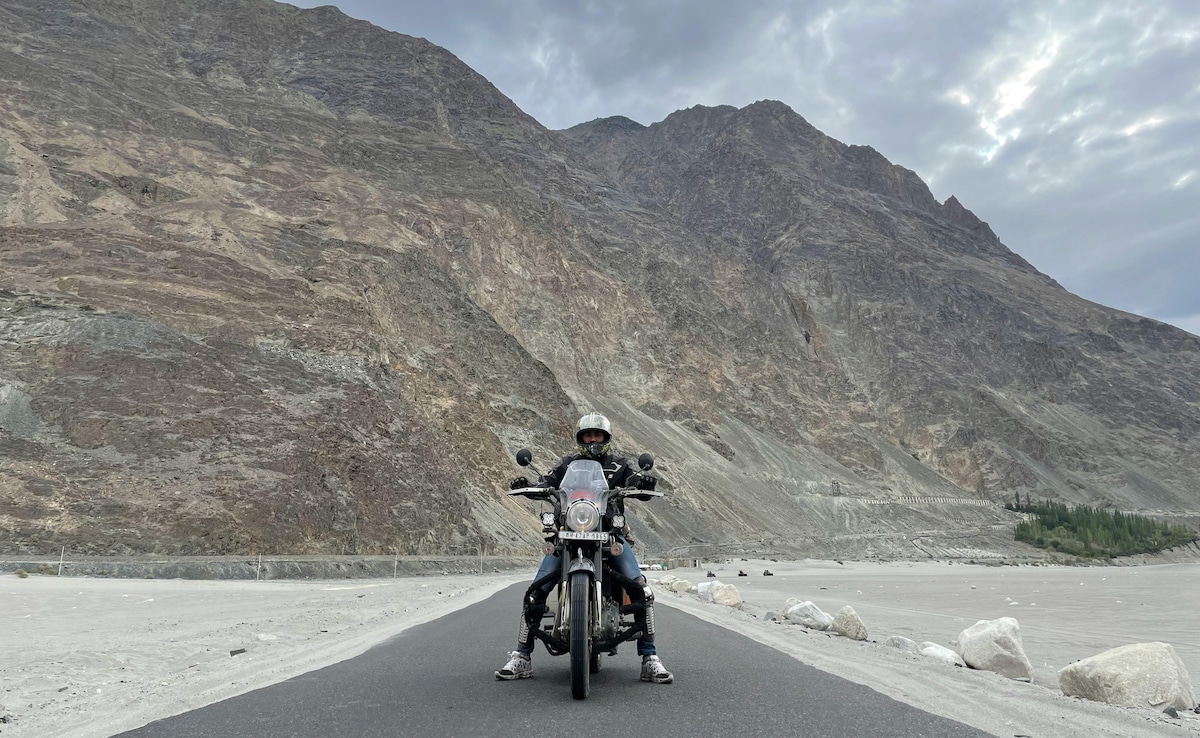
Photo Credit: Pexels
Bonus Tips For A Hassle-Free Ride:
1. Acclimatise In Leh For 24-48 Hours Before Heading Higher
Altitude sickness does not care how fit you are. The air gets thinner as you climb, and your body needs time to adjust. Spend at least a day or two in Leh before heading to places like Nubra Valley or Pangong Lake. Use this time to hydrate, rest, and explore the local culture.
2. Avoid Alcohol And Smoking At High Altitudes
It might be tempting to celebrate your arrival with a drink, but alcohol and tobacco can worsen altitude symptoms. They dehydrate the body and reduce oxygen absorption, making you more vulnerable to headaches, nausea, and fatigue. Stick to warm fluids, herbal teas, and nourishing meals until you are fully acclimatised.
3. Start Rides Early To Avoid Weather Surprises
Ladakh mornings are crisp, clear, and ideal for riding. By afternoon, clouds roll in, winds pick up, and visibility can drop. Starting early not only helps you avoid unpredictable weather but also gives you buffer time in case of roadblocks or breakdowns. Plus, watching the sunrise over the mountains is a reward in itself.
4. Carry Extra Cash As ATMs Are Rare And Unreliable
Digital payments are not always an option in remote areas. ATMs are few, and many run out of cash or go offline. Carry enough cash for fuel, food, and emergency expenses. Break it into smaller denominations for easier transactions at local shops and homestays.
5. Respect Local Customs And Nature
Dress modestly near monasteries, ask before photographing locals, and greet with a smile. Learn a few Ladakhi phrases if you can. Respecting traditions earns you goodwill and enriches your experience far beyond the ride.
6. Do Not Litter And Dispose Waste Responsibly
The Himalayas are fragile. Plastic bottles, snack wrappers, and cigarette butts do not belong on mountain trails. Carry a reusable water bottle, cloth bags, and a small trash pouch. Dispose waste at designated spots or take it back with you. Leave Ladakh better than you found it.
Also Read: 5 Epic Road Trips In South India To Take This Summer
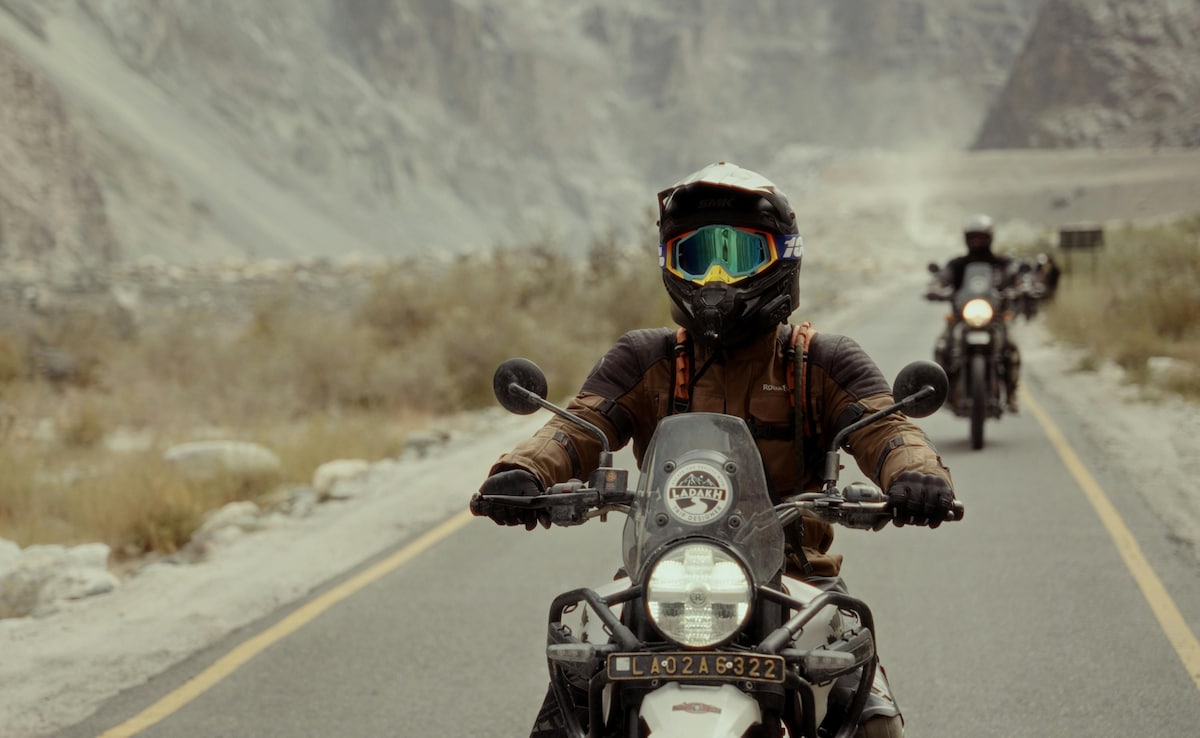
Photo Credit: Pexels
Final Thoughts:
A Leh Ladakh bike trip is all about embracing the journey, with all its highs and hiccups. With the right gear, mindset, and preparation, you will not just survive Ladakh, you will thrive in it. So go ahead, chase the clouds, conquer the passes, and let the Himalayas leave their mark on your soul.
Track Latest News Live on NDTV.com and get news updates from India and around the world

